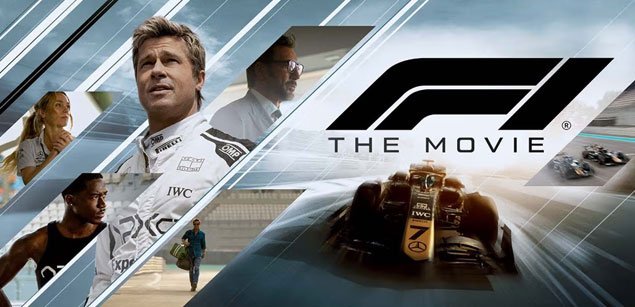🎬 Off the Grid and Into Culture: Why the F1 Movie’s Marketing Campaign Is a Masterclass in Modern Storytelling
Off the Grid and Into Culture: What the F1 Movie Campaign Gets Right
As a marketing strategist and brand storyteller, I live for the kind of campaign that doesn’t just sell something—it builds a world. The F1 movie campaign did exactly that. It didn’t just promote a film; it embedded it into culture, into fandom, into tech, into fashion—into life. And I loved every minute of it.
This wasn’t your run-of-the-mill theatrical release blitz. This was an orchestrated, immersive campaign that used authenticity as its fuel and audience obsession as its steering wheel. It blurred the line between Hollywood fantasy and real-world F1 spectacle—and that is what made it exceptional.
🏁 Real World, Real Stakes: Marketing Through Authenticity
Let’s start with the foundation: real racing integration. Instead of green screens and digital trickery, the team embedded a fictional F1 team (APXGP) right into actual Grand Prix weekends. The cameras weren’t faking speed—they were capturing it. That level of production realism isn’t just a creative choice. It’s a strategic one.
Why? Because today’s audiences—especially sports fans—can smell inauthenticity from a mile away. By integrating into live races, the campaign wasn’t just showing the audience the world of F1—it was inviting them into it. That creates not only trust, but emotional investment. That’s the holy grail of modern marketing.
🎯 Strategic Timing and Teasers That Actually Tease
The campaign didn’t wait until the film was “ready.” It started almost a year out. Why? Because anticipation is currency.
The first teaser aired during the British Grand Prix, and it didn’t follow the typical formula. There was no narrative arc or exposition—it was sound and speed and tension. It was vibe-first marketing, and it worked. It wasn't telling us what the movie was. It was making us feel what it would be like. And that’s the exact kind of sensory pre-marketing that sparks virality and earns attention in an oversaturated feed.
📲 Apple’s Ecosystem: A Masterclass in Owned Media Leverage
Now let’s talk about what I call ecosystem amplification. Apple didn’t just distribute the film—they activated their universe around it. From Apple Maps overlays of F1 tracks, to haptic-enhanced trailers in Apple TV, to push notifications via Wallet, they created a holistic, tech-driven experience.
Was it invasive? Maybe to some. But from a marketing strategy perspective, this is about using every inch of the customer journey to keep the story alive. It’s not just multi-channel—it’s multi-sensory.
🤝 Brand Partnerships That Made Sense—Because They Were the Culture
Let’s be honest: this was brand-palooza. From pit stops to paddocks, logos were everywhere. But in this context? It wasn’t just acceptable—it was expected. Formula 1 is built on sponsorships. Product placement wasn’t the garnish—it was the fabric of the experience.
What makes this brilliant is that the film didn’t shy away from it. Instead, it leaned in—and in doing so, it generated an estimated $40 million in brand revenue pre-release. But more importantly, those brands amplified the movie just as much as the movie elevated them. That’s how you create mutual marketing ecosystems—not transactions, but collaborations.
🎥 Why It Worked: Marketing That Feels Like a Moment
The real genius of the F1 campaign? It made the movie feel like an event, not a product. When Brad Pitt and Damson Idris walked the real F1 grid, fans didn’t see actors—they saw characters they already believed in. When the APXGP car showed up in a music video, it wasn’t a plug—it felt like part of the canon.
That’s what modern audiences crave: experiences that feel cultural, not commercial.
🚀 My Take as a Marketer
This campaign hit every lever: cultural relevance, community integration, platform synergy, and emotional storytelling. It’s the kind of work I strive to build—campaigns that go beyond awareness and create resonance.
It reminded me that modern marketing isn't about telling people what something is. It's about showing them why it matters. And when you do that with integrity, with strategy, and with a little Hollywood horsepower? You don't just market a film—you launch a phenomenon.
